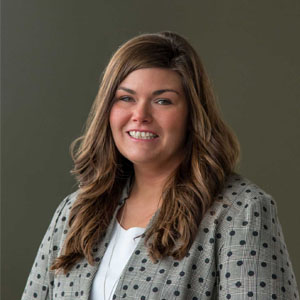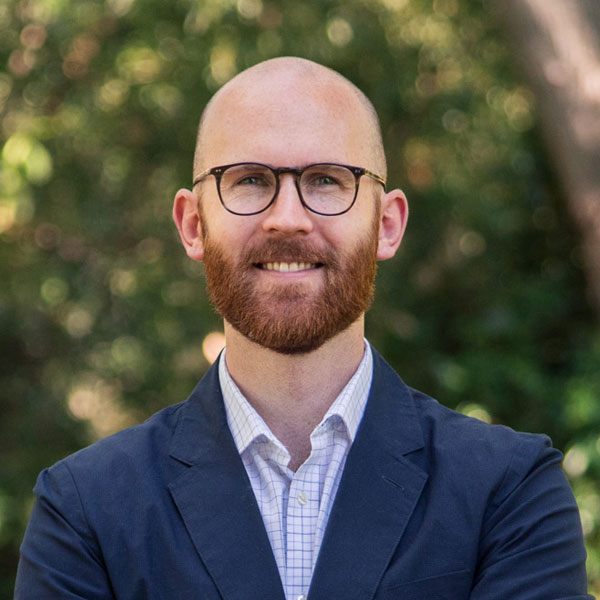Idaho is one of the best kept secrets in the country. It is naturally wild, gorgeous and geographically varied, from the Owyhee Desert in the south, to the wetlands along its many rivers, the rolling farmland of the northern Palouse, to the majestic mountain ranges that run along its spine. Idaho is also the 12th fastest growing state in the country, and its population of almost 1.7 million citizens is becoming more demographically, socially and economically diverse1. Boise, the state capital, is annually rated as one of the best places in the country to live and raise a family.


Idaho faces a significant challenge.

To maintain its status as a top place to live, work and raise a family, education in the Gem State has to improve. Just over half of Idaho’s students met the state’s own standard for proficiency on the state’s 2016 English exam, and only 42 percent did so in mathematics. Idaho’s educational outcomes earned it a D+ in the Education Week Quality Counts survey of education across the U.S. (ranking Idaho 48th out of all 50 states and the District of Columbia)2. Meanwhile, a dismal 26 percent of Idaho high school students taking the SAT in 2015 met the national benchmark for college and career readiness3.
And those are state averages: Idaho’s most vulnerable students are performing worse. Proficiency rates for low income students trailed those of their middle-class peers by a staggering 25 and 22 percentage points in English and math, respectively. Finally, and not surprisingly considering the persistently low SAT scores, the state’s go on rate actually dropped from 52 percent to 46 percent between 2014 and 20154.
Idaho can, and must, do better for all of its students. Bluum has been fortunate to work with educators, community groups, researchers and education leaders throughout the Gem State.
REACHING FOR ’20 IN 10′
SCHOOL SNAPSHOTS
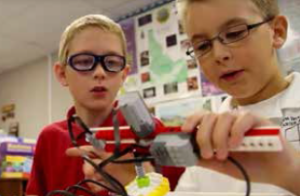 School Type: Charter Public
School Type: Charter Public
Location: Rathdrum
Grades Served: K-10 in 2015-16; K-12 by 2017-18
Enrollment: 446 in 2015-2016; 700 by 2020
’20 in 10′ Investment: $450,000 over three years
’20 in 10′ Impact: 372 additional students served
About the School: Founded with a mission of providing its students with a rigorous and challenging learning environment, North Idaho STEM maximizes individual potential by preparing students, through rigorous and relevant content, to be productive and successful citizens. They develop a strong work ethic and the higher-level critical thinking skills needed to solve problems in the real world. North Idaho STEM had the second highest proficiency scores in math, out of more than 700 schools in Idaho on the 2015-16 ISAT, while ELA scores were in the top five percent of all schools statewide. The school plans to expand to 12th grade and grow to serve 700 students by 2017.

 School Type: Charter Public
School Type: Charter Public
Location: Boise
Grades Served: K-12
Enrollment: 950 in 2015-16; 1,100 by 2017-18
’20 in 10′ Investment: $750,000 over two years
’20 in 10′ Impact: 530 new seats
About the School: Founded in 2010, Sage was created with the mission of developing internationally-minded citizens of the world, ready to compete and engage in the global marketplace. With funds from Building Hope and ‘20 in 10’, Sage consolidated two campuses and moved into a new 130,000 square foot building in August of 2016.
Sage has grown rapidly. In two academic years, the school added almost 500 new students. This rapid growth, facilitated by ‘20 in 10’ financial support, has not been without challenges and some pain. In order to scale-up the quality and rigor of the International Baccalaureate program, school leaders have needed to introduce more structure for the staff, which left some wondering “How do we hold on to things that made us really special without turning into a K-12 traditional school?”
Other staffers shared that what makes Sage special is a faith in the importance of a positive school culture and climate in which “teachers truly believe that not one kid is going to be allowed to fail.”7

 School Type: Charter Public
School Type: Charter Public
Location: Meridian
Grades Served: K-12
Enrollment: 837 in 2015-16; 1,098 by 2020-21
’20 in 10′ Investment: $1,093,220 over 4 years
’20 in 10′ Impact: 478 new seats
About the School: Compass was founded in 2005 with the mission of preparing students for life-long excellence through exceptional academics, character development and the ability to define and defend a personal worldview. Compass is annually one of Idaho’s highest performing public schools. They were the third rated school on the 2016 ISAT in math and their ELA scores were in the top 15. Compass was in the top ten of all Idaho high schools on the SAT.
‘20 in 10’ support has allowed Compass to add approximately 250 seats during the 2015-16 school year. They are expected to add another 100 seats during the 2016-17 year.7

 School Type: Charter Public Network
School Type: Charter Public Network
Location: Nampa, Pocatello & Statewide Virtual
Grades Served: I-DEA K-12; Gem K-4 in 2015-2016, K-12 by 2020
Enrollment: 897 in 2015-16. 1,916 by 2018-19, and 2,586 by 2022-23
’20 in 10′ Investment: $4,601,500 over five years
’20 in 10′ Impact: 1,786 new seats
About the Schools: Gem Innovation Schools is Idaho’s first home-grown charter management organization. The Network plans to operate three brick-and-mortar schools (in Pocatello, Nampa and a site to be determined), while continuing to operate I-DEA, their online school.
Founded in 2004 as the Idaho Distance Education Academy (I-DEA), Gem Innovation launched its first brick-and-mortar school, Gem Prep, in Pocatello in 2014. Gem Prep: Nampa launched in 2016; Gem Innovation Schools is currently planning to launch a third school in 2018-2019.
Gem’s brick-and-mortar schools follow a unique blended learning model. For ELA and math instruction, teachers use the ‘station rotation’ format, in which students rotate through three different stations during a 90-minute block. At one station, students use computer-adaptive software, while at another station, six to eight students receive direct instruction from the teacher. The third station varies from day to day, and can include independent work, additional small group work, or extra tutoring.

School Type: Charter Public 
Location: Nampa
Grades Served: K-12
Enrollment: 780 in 2015-2016; 1,282 by 2021-22
’20 in 10′ Investment: $1,546,230 over four years
’20 in 10′ Impact: 582 new seats
About the School: Idaho Arts Charter School is Idaho’s premier K-12 public arts academy. Elementary school students take part in general arts education in music and dance, and complete three thematic units or “storylines” each year that fold art into social studies, science and reading instruction.
Secondary students specialize more deeply in a specific arts education (e.g., piano, percussion, ballet, electric orchestra, artistic dance) and have multiple opportunities to perform. Students may compete in their chosen art, ranging from performances at the school’s annual Fall Festival to state, regional, and national dance and orchestra competitions. The school expects students to begin presenting during the primary grades. All teachers at the school apply for grants, which staff members believe contributes to new ideas and money flowing into the school. Utilizing ‘20 in 10’ support, Idaho Arts constructed a new 37,000 square foot elementary school with dedicated studios for dance, music and visual arts.

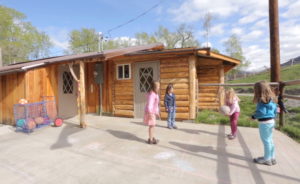 School Type: Charter Public
School Type: Charter Public
Location: Carmen
Grades Served: K-10 in 2015-16; K-12 by 2017-18
Enrollment: 96 in 2015-2016; 125 by 2017-18
’20 in 10′ Investment: $123,015 one year
’20 in 10′ Impact: 45 new seats
About the School: Founded in 2005 with the mission of developing each student to their greatest potential academically, socially and emotionally, successful Upper Carmen students emulate confidence, productivity and responsibility.
Upper Carmen uses a blended, multi-age classroom model and a proprietary reading curriculum (designed by school leader Sue Smith and called BethTommy Read-to-Read) to achieve a high level of academic rigor and personalized learning. By design the school is “small enough so as not to lose what you have.” The Upper Carmen Charter School partners with the South Lemhi School District, supported by the ’20 in 10′ grant, on the BethTommy literacy program.
Over three years, the Upper Carmen Charter school will use ‘20 in 10’ support to grow from a K-8 to a K-12 model, which adds 45 high school students to its enrollment.

 School Type: Charter Public
School Type: Charter Public
Location: Idaho Falls
Grades Served: K-6 in 2016-17; K-8 by 2018-19
Enrollment: 271 in 2016-2017; 588 by 2020
’20 in 10′ Investment: $1,000,000 over five years
’20 in 10′ Impact: 538 new seats
About the School: Alturas International Academy promotes academic distinction, while empowering students to be principled and intellectual leaders as they explore, create, investigate, and analyze in a safe, engaged, collaborative environment that inspires them to make a genuine difference in their local and global community.
Alturas is a startup charter school in Idaho Falls led by a strong community board and an award winning lead teacher. The board consists of Idaho Falls’ leaders in business, medicine, law and real estate. They adopted the International Baccalaureate (IB) program because students in these programs academically outperform their non-IB peers. There are nearly 4,000 IB schools in close to 150 countries.
Utilizing ‘20 in 10’ support and working closely with Building Hope, Alturas is expected to move into the historic O.E. Bell Building, a former district school building located in the heart of downtown Idaho Falls. When the building opens in the summer of 2017, this new space will allow Alturas to recruit and serve a diverse group of students.

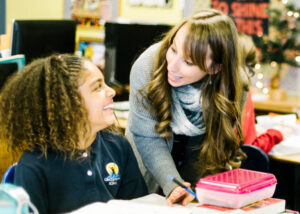 School Type: Private Religious
School Type: Private Religious
Location: Pocatello
Grades Served: Pre-K-8 in 2015-16; K-12 by 2019-20
Enrollment: 407 in 2015-2016; 700 by 2020
’20 in 10′ Investment: $250,000 over three years
’20 in 10′ Impact: 300 new seats
About the School: Grace Lutheran has been operating a K-8 school for 60 years. The school added a high school in August of 2016. The school’s mission is: “to engage students and their families with excellence in every facet of their education; equip students with the highest levels of skills in multiple disciplines; which will propel them to be effective in their future vocations and in all of life.”
Grace Lutheran is part of a nationwide network of Lutheran schools and universities and is considered by many to be the finest school in Pocatello, with a long track record of educational excellence. The school utilized ‘20 in 10’ support to launch their high school program.

BUILDING AWARENESS & SHARING LESSONS
 If successful, it is important to point out that the ‘20 in 10’ strategy would impact directly only about seven percent of Idaho’s 300,000 K-12 students. The ’20 in 10′ effort doesn’t mean giving up on improving existing schools, which will continue to educate the majority of Idaho’s students. It does, however, mean growing a new supply of high-quality schools that offer advanced learning opportunities for children. To have a larger impact, we must share the lessons from this effort and from the ’20 in 10′ schools themselves.
If successful, it is important to point out that the ‘20 in 10’ strategy would impact directly only about seven percent of Idaho’s 300,000 K-12 students. The ’20 in 10′ effort doesn’t mean giving up on improving existing schools, which will continue to educate the majority of Idaho’s students. It does, however, mean growing a new supply of high-quality schools that offer advanced learning opportunities for children. To have a larger impact, we must share the lessons from this effort and from the ’20 in 10′ schools themselves.
We have generated several reports aimed at building awareness for the need of a new school strategy and to share early lessons.
LOOKING FORWARD
 Idaho’s schoolchildren will be entering an increasingly competitive world in which successfully realizing their dreams will require skills and knowledge we may not even be aware of yet. Each child deserves nothing less than an excellent education that prepares them for the challenges and opportunities that await. The challenges Idaho faces in delivering world-class educational opportunities are profound, and Bluum is committed to helping Idaho deliver innovative solutions to these challenges.
Idaho’s schoolchildren will be entering an increasingly competitive world in which successfully realizing their dreams will require skills and knowledge we may not even be aware of yet. Each child deserves nothing less than an excellent education that prepares them for the challenges and opportunities that await. The challenges Idaho faces in delivering world-class educational opportunities are profound, and Bluum is committed to helping Idaho deliver innovative solutions to these challenges.
Through this work, we are helping Idaho become a powerful model of what can happen when passionate educators and other leaders come together in support of a bold shared vision. The fact that this work is happening in a rural state is also critical for informing the larger body of work in school innovation.
Realizing the ‘20 in 10’ vision of excellent educational opportunities for all K-12 students in Idaho is more a journey than a destination. We value the support and contributions of the Albertson Family Foundation and our many other partners as we work towards the shared goal of expanding educational opportunity in all its varied forms to best meet the needs of Idaho’s children and families.
“Realizing the ‘20 in 10’ vision of excellent educational opportunities for all K-12 students in Idaho is more a journey than a destination.”
Endnotes
1 “Idaho’s population grows to nearly 1.7 million,” Idaho Statesman (January 5, 2016).
2 “Quality Counts 2016: State Report Cards Map,” Education Week (January 26, 2016).
3 College Board (2015). 2015 College Board Results: Idaho.
4 Clark Corbin, “Idaho’s College Go-On Rate Dips Below 50 Percent,” IdahoEdNews.org
5 Grant amounts include both planning grants and expansion grants.
6 ‘20 in 10” cohort schools take MAP assessments to better track academic growth for individual students over a single school year.
7 Special thanks to the team from Education Northwest for their help in writing this school profile.



 The J.A. and Kathryn Albertson Family Foundation has long been working to improve the education landscape in Idaho and has invested more than $600,000,000 to provide opportunities for Idahoans to prosper through education. In 2013, the Foundation announced its ‘20 in 10’ campaign, which sought to “close the gap between mediocrity and excellence in college and career readiness by creating 20,000 new, high-performing charter seats in 10 years.”
The J.A. and Kathryn Albertson Family Foundation has long been working to improve the education landscape in Idaho and has invested more than $600,000,000 to provide opportunities for Idahoans to prosper through education. In 2013, the Foundation announced its ‘20 in 10’ campaign, which sought to “close the gap between mediocrity and excellence in college and career readiness by creating 20,000 new, high-performing charter seats in 10 years.” While the initial cohort of ’20 in 10′ schools are all Idaho-based, we recognize that students can benefit from what successful school models are doing in other states. Bluum is actively recruiting top charter management organizations from across the country for future expansion, especially those that are committed to serving minority and at-risk students. For example, Bluum has worked closely with the long-established charter management organization Pathways in Education to launch a new school in Nampa. In partnership with the Nampa School District, the new school is approved to open in 2017-18 and will be dedicated to serving at-risk teens and young adults.
While the initial cohort of ’20 in 10′ schools are all Idaho-based, we recognize that students can benefit from what successful school models are doing in other states. Bluum is actively recruiting top charter management organizations from across the country for future expansion, especially those that are committed to serving minority and at-risk students. For example, Bluum has worked closely with the long-established charter management organization Pathways in Education to launch a new school in Nampa. In partnership with the Nampa School District, the new school is approved to open in 2017-18 and will be dedicated to serving at-risk teens and young adults.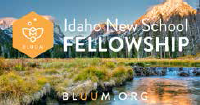 We also recognize that talent is the lifeblood of successful schools. Bluum launched the Idaho New School Fellowship in 2015 as a way to recruit, develop and place top talent in Idaho’s growing new school sector. Working with the nationally acclaimed KIPP Fisher Fellowship, Bluum recruited accomplished educators to open schools in 2018 that are dedicated to serving diverse populations. The Idaho New School Fellowship has attracted attention across the country, with the Louis Calder Foundation providing $120,000 in grant support.
We also recognize that talent is the lifeblood of successful schools. Bluum launched the Idaho New School Fellowship in 2015 as a way to recruit, develop and place top talent in Idaho’s growing new school sector. Working with the nationally acclaimed KIPP Fisher Fellowship, Bluum recruited accomplished educators to open schools in 2018 that are dedicated to serving diverse populations. The Idaho New School Fellowship has attracted attention across the country, with the Louis Calder Foundation providing $120,000 in grant support. Performance of students in ‘20 in 10’ cohort schools is similarly strong on Northwest Evaluation Association’s Measures of Academic Progress (MAP)6 assessment, which is a national measure taken by over 8 million students yearly. ‘20 in 10’ students outperformed national averages on MAP by 30 or more percentile points in math and 26 or more percentile points in reading (graph 2). Again, students in ’20 in 10′ schools are performing well on these indicators and are significantly outpacing national averages in both subjects.
Performance of students in ‘20 in 10’ cohort schools is similarly strong on Northwest Evaluation Association’s Measures of Academic Progress (MAP)6 assessment, which is a national measure taken by over 8 million students yearly. ‘20 in 10’ students outperformed national averages on MAP by 30 or more percentile points in math and 26 or more percentile points in reading (graph 2). Again, students in ’20 in 10′ schools are performing well on these indicators and are significantly outpacing national averages in both subjects. Students in cohort schools also demonstrate higher levels of “College and Career Readiness,” as measured by the SAT exam, with 11th graders in ‘20 and 10’ cohort schools outpacing their peers across the state by significant margins (graph 5). On the Reading & Writing portion, the percentage of 11th graders in ‘20 in 10’ schools who were identified by the SAT as “College and Career Ready” outperformed the state average by 20 percentage points, while outperforming by 8 percentage points on the math portion. Notably, mathematics scores for both groups of students indicate low readiness for college and career.
Students in cohort schools also demonstrate higher levels of “College and Career Readiness,” as measured by the SAT exam, with 11th graders in ‘20 and 10’ cohort schools outpacing their peers across the state by significant margins (graph 5). On the Reading & Writing portion, the percentage of 11th graders in ‘20 in 10’ schools who were identified by the SAT as “College and Career Ready” outperformed the state average by 20 percentage points, while outperforming by 8 percentage points on the math portion. Notably, mathematics scores for both groups of students indicate low readiness for college and career.
 The ‘20 in 10’ cohort schools receive less state financial support per pupil than the state average, yet are able to produce academic gains that significantly outperform the average Idaho school. In only one ‘20 in 10’ school does the level of state financial support per pupil that the school receives exceed the state average (Upper Carmen is a small school located in a remote part of Idaho and receives additional state support due to its small size). Given their academic performance, the return on state investment in these schools is high.
The ‘20 in 10’ cohort schools receive less state financial support per pupil than the state average, yet are able to produce academic gains that significantly outperform the average Idaho school. In only one ‘20 in 10’ school does the level of state financial support per pupil that the school receives exceed the state average (Upper Carmen is a small school located in a remote part of Idaho and receives additional state support due to its small size). Given their academic performance, the return on state investment in these schools is high.
 The first two Idaho New School Fellows were selected in 2016 from a pool of 44 applicants from across Idaho and 13 other states. Over a period of several months, a review team of five, with support from KIPP, carefully evaluated each of the 44 applications to identify our first two Fellows. Amanda Cox and Brad Petersen joined the 2016-17 Fisher Fellowship cohort and are currently working to open new schools in August of 2018.
The first two Idaho New School Fellows were selected in 2016 from a pool of 44 applicants from across Idaho and 13 other states. Over a period of several months, a review team of five, with support from KIPP, carefully evaluated each of the 44 applications to identify our first two Fellows. Amanda Cox and Brad Petersen joined the 2016-17 Fisher Fellowship cohort and are currently working to open new schools in August of 2018.